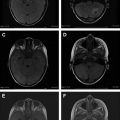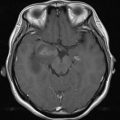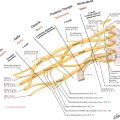Although mammography is the standard imaging modality for detection of breast cancer, magnetic resonance (MR) imaging is a valuable adjunct and, in certain cases, is the imaging of choice. Contrast-enhanced breast MR imaging provides a noninvasive means of staging disease, assessing posttreatment response, and screening of high-risk patients with genetic predispositions. Additional indications for MR mammography include lesion characterization, contralateral breast evaluation in patients with proved malignancy, and identifying primary malignancy in patients with axillary nodal disease. There are several competing factors that influence the quality of the study. Finding the right balance is the key to providing high-quality images that can be accurately interpreted.
- •
Magnetic Resonance Mammography (MRM) is often the imaging modality of choice for the detection of breast cancer.
- •
Contrast-enhanced MRM is a noninvasive modality used in the screening of high-risk patients.
- •
MR mammography is also indicated for lesion characterization, contralateral evaluation in patients with biopsy-proved malignancy, and the identification of primary malignancy in patients with axillary nodal disease.
Introduction
With the exception of implant analysis for detecting rupture, the value of breast magnetic resonance (MR) imaging is centered on the use of an intravenous contrast agent. Contrast-enhanced MR mammography (MRM) significantly aids in the detection of areas of possible malignancy. In addition, because breast MR technique includes the axilla, it offers the possibility of detection or confirmation of the presence of axillary metastasis. With its high sensitivity and effectiveness in dense breast tissue, MR imaging is a valuable addition to the diagnostic work-up of a breast abnormality or biopsy-proved cancer. Overall, contrast-enhanced MRM provides a quantitative, noninvasive, and nondestructive means of characterizing breast tumors, both morphologically and functionally. The major limitation of MRM is its low (37%) to moderate specificity, which, in combination with its high sensitivity, can lead to unnecessary biopsies, patient anxiety, and higher costs.
The reported sensitivity of MRM for the visualization of invasive cancer has approached 100%. There are many examples in the literature of MRM demonstrating breast cancer that was clinically, mammographically, and sonographically occult. Several protocols exist; however, a common element in contrast-enhanced breast MR imaging is acquisition of T1-weighted images before and after the administration of intravenous contrast material. The use of paramagnetic contrast agents and gradient-echo sequences, both 2-dimensional and 3-dimensional (3D), have largely replaced spin-echo sequences.
MRM should be bilateral except for its use in women with a history of mastectomy or when the MR imaging is being performed expressly to further evaluate or follow findings in 1 breast. As expressed in American College of Radiology (ACR) recommendations, MRM findings should be correlated with clinical history, physical examination, mammography, and any other prior breast imaging. Many published studies are concordant in finding that MRM is the most sensitive imaging technique available for preoperative breast cancer staging in both mastectomy and breast conservation candidates to define the relationship of the tumor to the fascia and its extension into pectoralis major, serratus anterior, and/or intercostal muscles ; however, ongoing studies are evaluating its role in improving the rate of successful breast-conserving procedures. With modern, high-field MR imaging scanners and the right pulse sequences, high signal-to-noise ratio, high spatial resolution to assess morphology, and adequate temporal resolution for optimal enhancement assessment can be achieved, with good coverage of both breasts.
Anatomophysiologic overview of angiogenesis
The diagnosis in dynamic contrast-enhanced MRM is based primarily on contrast enhancement velocity. Breast carcinomas generally demonstrate a faster and stronger signal intensity increase after a bolus injection of gadolinium-based contrast agent compared with most benign lesions and normal breast tissue. Increased vascularity is considered an early sign of carcinoma formation. Contrast uptake behaves differently in breast carcinomas compared with normal breast tissue for several reasons. The blood vessels supplying the breast cancer are different than the vasculature of the normal breast parenchyma. In addition, not only does the blood supply vary, but also the vessels feeding cancers are generally increased in quantity with the formation of new capillaries. The integrity of these vessels are also diminished with defects in the basal membrane and wider interstitial spaces ( Figs. 1 and 2 ). Host capillaries are dilated and hyperpermeable and exude fibrin, which releases proteases and collagenases that autodigest healthy surrounding tissues. The migration of endothelial cells is seen outside the vessels into the adjacent widened interstitial space. This process of angiogenesis begins before tumor growth and is insufficient, leading to a disorganized chaotic blood flow. There have been several proangiogenic factors described, the most potent of which is vascular endothelial growth factor. Upregulation of vascular endothelial growth factor by a tumor results in stimulation of local endothelial ingrowth into the tumor bed and recruitment of endothelial progenitor cells to travel from bone marrow to the tumor bed. This results in heterogeneity of tissue oxygenation in breast cancers. Oxygenation at the tumor periphery seems to be of prognostic importance for the clinical outcome of breast cancer. In addition, patients with breast carcinoma have been noted to develop arteriovenous shunts, which correlate with higher likelihood for metastatic disease and increased mortality.


Anatomophysiologic overview of angiogenesis
The diagnosis in dynamic contrast-enhanced MRM is based primarily on contrast enhancement velocity. Breast carcinomas generally demonstrate a faster and stronger signal intensity increase after a bolus injection of gadolinium-based contrast agent compared with most benign lesions and normal breast tissue. Increased vascularity is considered an early sign of carcinoma formation. Contrast uptake behaves differently in breast carcinomas compared with normal breast tissue for several reasons. The blood vessels supplying the breast cancer are different than the vasculature of the normal breast parenchyma. In addition, not only does the blood supply vary, but also the vessels feeding cancers are generally increased in quantity with the formation of new capillaries. The integrity of these vessels are also diminished with defects in the basal membrane and wider interstitial spaces ( Figs. 1 and 2 ). Host capillaries are dilated and hyperpermeable and exude fibrin, which releases proteases and collagenases that autodigest healthy surrounding tissues. The migration of endothelial cells is seen outside the vessels into the adjacent widened interstitial space. This process of angiogenesis begins before tumor growth and is insufficient, leading to a disorganized chaotic blood flow. There have been several proangiogenic factors described, the most potent of which is vascular endothelial growth factor. Upregulation of vascular endothelial growth factor by a tumor results in stimulation of local endothelial ingrowth into the tumor bed and recruitment of endothelial progenitor cells to travel from bone marrow to the tumor bed. This results in heterogeneity of tissue oxygenation in breast cancers. Oxygenation at the tumor periphery seems to be of prognostic importance for the clinical outcome of breast cancer. In addition, patients with breast carcinoma have been noted to develop arteriovenous shunts, which correlate with higher likelihood for metastatic disease and increased mortality.
MR imaging contrast agents
For virtually all breast MR imaging studies, a T1-shortening contrast agent is used to assess cross-sectional morphology, tissue perfusion, and the enhancement kinetics of breast lesions. Gadolinium-based agents are the most commonly used contrast media. In its elemental state, gadolinium contains 3 unpaired outer shell electrons and is not safe for human injection. Gadolinium must first undergo chelation, a process by which it is bonded with another organic compound, increasing its stability. After chelation to a conjugate base, gadolinium can be safely injected. Patient undergoing contrast-enhanced MR imaging will receive gadolinium contrast delivered intravenously, usually at the antecubital fossa. Contrast infusion is then followed by a saline flush. According to current literature, 0.1 mmol of contrast agent per kilogram body weight is the accepted dose standard. There has been only 1 small-scale study to conclude that use of a higher dose, 0.16 mmol/kg, resulted in greater conspicuity of malignant lesions.
The first Food and Drug Administration (FDA)-approved gadolinium contrast agent was gadopentate dimeglumine, marketed as Magnevist (Bayer Healthcare Pharmaceuticals, Wayne, NJ), 1988. There are currently 8 FDA-approved paramagnetic gadolinium-based contrast agents available in the United States. Table 1 compares physical properties of the current FDA-approved gadolinium contrast agents used in breast imaging. Although the agents listed in Table 1 were FDA approved initially for central nervous system imaging, and some were approved later for body applications, they are now routinely used in breast imaging when MR imaging is indicated. The indications for breast MR imaging is detailed in the ACR practice guidelines for recommendations for contrast-enhanced MR imaging ( Box 1 ).
| Contrast Brand Name | Contrast Generic Name | Class | Viscosity, cP, 37°C | Density, g/mL | Molecular Weight | Relaxivities, L/mmol −1 | |
|---|---|---|---|---|---|---|---|
| T1 | T2 | ||||||
| Magnevist (Bayer Healthcare Pharmaceuticals, Wayne, NJ) | Gadopentetate dimeglumine (Gd-DTPA) | Linear, ionic | 2.9 | 1.195 | 938 | 4.1 | 6.3 |
| ProHance (Bracco Diagnostics Inc. Princeton, NJ) | Gadoteridol (Gd-HP-D03A) | Macrocytic, nonionic | 1.3 | 1.137 | 559 | 4.1 | 5.3 |
| Omniscan (GE Healthcare Inc. Princeton, NJ) | Gadodiamide (Gd-DTPA-BMA) | Linear, nonionic | 1.4 | 1.14 | 574 | 4.3 | 5.1 |
| Gadovist (Bayer Healthcare Pharmaceuticals, Wayne, NJ) | Gadobutrol dimeglumine (Gd-BTD03A) | Macrocyclic, nonIonic | 4.96 | 605 | 5.6 | 6.5 | |
| OptiMARK (Mallinckrodt Inc. St. Louis, MO) | Gadoversetamide (Gd-DTPA-BMEA) | Linear, nonIonic | 2.0 | 1.16 | 662 | 4.7 | — |
| MultiHance (Bracco Diagnostics Inc. Princeton, NJ) | Gadobenate (Gd-BOPTA) | Linear, ionic | 5.3 | 1.22 | 1058 | 6.3 | 12.5 |
- •
Screening of high-risk patients (>20% lifetime risk for breast cancer)
- ○
Carriers of BRCA mutation
- ○
First-degree relatives of proved BRCA mutation carriers
- ○
High-risk family history
- ○
Women with history of prior chest irradiation
- ○
Screening of contralateral breast in women with newly diagnosed breast malignancy
- ○
- •
Screening of women post augmentation limited by mammography
- ○
Post reconstruction
- ○
- •
Post free injections
- •
Evaluate extent of disease ( Fig. 3 )
Fig. 3
Patient with advanced invasive carcinoma of the left breast. Axial, contrast-enhanced, T1-weighted MR imaging of both breasts. Invasion into the chest wall is identified; this finding is not visualized on mammogram ( A ) craniocaudal ( B ) mediolateral oblique views. ( C ) MR imaging characterizes the breast anatomy.
- •
Evaluate for residual disease (post lumpectomy with positive margins)
- •
Monitoring response to neoadjuvant chemotherapy
- •
Lesion characterization
The cornerstone of the ability of gadolinium as a contrast agent resides in its 7 unpaired electrons, which gives it its paramagnetic property. A paramagnetic metal, when placed in a magnetic field, interacts with protons within water molecules in surrounding tissues, allowing the unpaired electrons to interact with surrounding tissues, causing relaxation of T1, greater than that of T2, and identifying hypervascular lesions ( Fig. 4 ). Gadolinium chelates can be classified according to their physicochemical properties, as listed in Table 1 . These unique properties affect how gadolinium-containing contrast agents react within the body. The class of gadolinium chelate, linear versus macrocystic and ionic versus nonionic, affects the stability of the agent: Macrocyclic agents are more stable than linear agents, and ionic agents are more stable than nonionic agents.
Future of Contrast Agents
A promising platform for MR imaging contrast agent development is nanotechnology, in which superparamagnetic iron oxide nanoparticles are tailored for MR contrast enhancement and/or for molecular imaging. Studies have shown ultrasmall superparamagnetic iron oxide–enhanced MR imaging to be beneficial in demonstrating axillary lymph node metastases, which is an important determinant in the treatment of patients with breast malignancy and a vital prognostic factor. Additionally, MR imaging contrast agents are being developed for the detection of more dynamic variables such as pH, oxygen tension, ion and metabolite concentrations, and enzyme-catalyzed reactions. The Journal of American Chemical Society reports on research conducted from the University of Pennsylvania with glycol chitosan–coated iron oxide nanoparticles. These iron oxide nanoparticles are conjugated with glycol chitosan, a water-soluble polymer with pH-titratable charge, to generate a T2*-weighted MR contrast agent that responds to alterations in its surrounding pH via the Warburg effect. The Warburg effect refers to the anaerobic pathway on which most cancer cells on to generate adenosine-5′-triphosphate. In contrast to normal differentiated cells that undergo aerobic metabolism, tumor cells undergo anaerobic metabolism, producing lactic acid. Tumor cells also disrupt normal surrounding blood flow, impeding the ability of these cells to clear this acid. These processes contribute to the lower pH found in tumor cells compared with that of cells of normal tissue. The acidic environment of tumor cells attracts the sugar-based polymer, causing the nanocarrier to accumulate and become ionized in low pH, prominent on MR images. The nanoparticle remains neutral in normal nonacidic tissues, further differentiating abnormal and normal tissues. Researchers state that this would increase the specificity of MRM, allowing clinicians to better differentiate the benign and malignant tumors, through correlation between malignancy and pH.
Dynamic contrast-enhanced breast MR imaging protocol
There are several different vendor-specific protocols for breast MR imaging: General Electric (VIBRANT [GE Healthcare, Waukesha, WI] [Volume Image Breast Assessment]), Phillips (Andover, MA) (THRIVE [T1 High-Res Isotropic Vol Excitation]), Siemens (Malvern, PA) (VIEWS [fl3d, 3D-FLASH]), Hitachi Medical (Twinsburg, OH) (TIGRE), and Toshiba America Medical Systems, (Tustin, CA)a (RADIANCE). Although there are subtle differences and similarities among the different vendors, there are common challenges in creating an accurate and practical protocol for MRM. There are several variables to consider: signal-to-noise ratio (SNR), fat suppression, 3D-spatial resolution, temporal resolution, simultaneous coverage of the bilateral breast, and minimization of artifacts. The challenge is that SNR, spatial resolution, volume coverage, and imaging time all compete with each other, and artifact-free images may be difficult to obtain ( Box 2 ).







